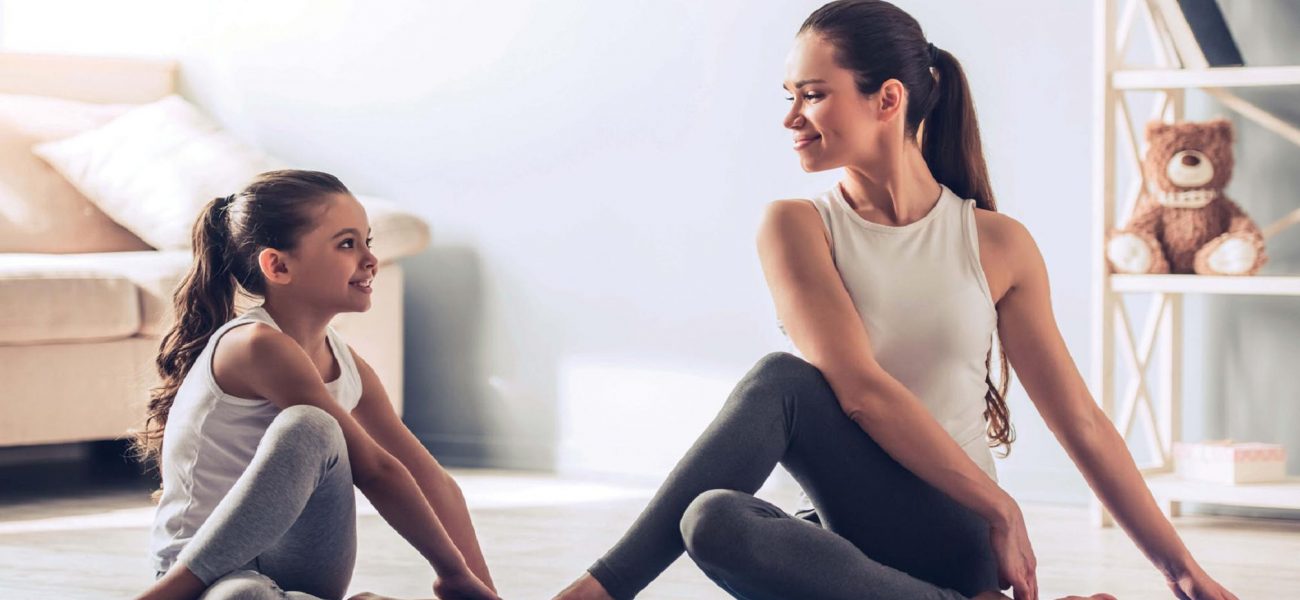It’s no secret that yoga is great stress relief for your body and mind.
In the middle of a hectic week, there’s nothing quite like rolling out your yoga mat and practising your best tree pose.
“As you’re calming your body, your nervous system is sending messages to your brain to stay calm,” says Dr Lisa Greenspan, a counselling psychologist who’s trained to teach yoga and mindfulness to children and teenagers. “So, as you calm the body it tells the brain that everything is all right.”
Children can benefit from this relaxing mindful movement, too. “Neurologically, we set habits for life between the ages of 14 and 18,” says Charlotta Martinus, founder of the Teen Yoga Foundation charity. “Young people are consistently asked to see themselves from the outside. Yoga allows them to accept themselves just as they are from the inside. This reduces stress, helps them to perform better in exams and increases kindness towards themselves and others.”
Plus, according to The Mental Health Foundation, 50 percent of mental health problems begin by the age of 14. Add in the pressures of exams and social media, and there’s no doubt that some stress-busting yoga time would be good for the entire family.
How to get the kids involved
Charlotta says that yoga also helps young people to accept their bodies, have better friendships and even deal with physical issues such as the growing pains that can be common between the ages of 11 and 13. But you don’t have to break out into a sweat to help your kids get these benefits. Try these tips for getting them involved.
1. Lead by example
“Do yoga yourself and let your children see you doing it,” says Dr Greenspan. “They’ll get the benefit even if they’re not actually doing it themselves.” Whether you’re practising mindfulness with an audio app or following a YouTube video at home, show your children what you’re doing. Resist the temptation to retreat to a quiet room. Instead, find some space within earshot of your kids and tell them that you’re having a few minutes to yourself. Then turn up the volume so your children can listen in to what you’re doing, even if they don’t mean to.
2. Buy a book
There are lots of lovely books available for children and teens that introduce the idea of yoga in a way that appeals to them. Instead of watching a video or listening to an instructor, a yoga book also gives your child the opportunity to dip in and out whenever he likes. Try The ABCs of Yoga For Kids by Teresa Anne Power and Kathleen Rietz, or Breathe: Yoga for Teens by Mary Kaye Chryssicas, which comes with a DVD, too.
3. Let them do it their way
When we do yoga, we’re tempted to try to get every posture just right. While you may work hard to create the perfect onelegged pigeon pose, your child needs gentle encouragement when you’re doing it together.
After all, you don’t want her to get discouraged and give up. Instead, Dr Greenspan suggests allowing her to explore her way through the poses. When she needs some guidance, try saying, “Do you want to do the boat pose now?” or “Why don’t you see how it feels when you put your head to the other side?”
4. Don’t push it
“They might not want to do something that Mum’s really good at,” explains Dr Greenspan. Certainly ask your son if he wants to join you, but if he says no, don’t force the matter. He may be more willing to try it somewhere else, like at school. Many schools offer mindfulness and yoga, but if your child’s doesn’t, why not suggest it? Even better, if you know a teacher who’s keen, put them in touch with the school to talk about starting a yoga programme.
5. Use their interests
“Look at your kid and see what they’re into,” says Charlotta. “One of my sons got into the philosophy of yoga and the other does yoga stretches to help with football.” Try these approaches for different personalities:
- If your child likes gaming, you can do yoga on the Wii
- If your teen loves to read, teach him the philosophy with a book like The Book of Dharma: Making Enlightened Choices by Simon Haas
- If she’s crazy about music, put on her favourite song and do the sun salutation to it.
If he’s into sport, try acro yoga, which is a combination of yoga and acrobatics
6. Ask your instructor
If your child is willing to give it a go, you might be able to find a parent and child yoga class. Or you can ask your usual instructor if you can bring your kids along to your favourite class. “A lot of people who run classes are happy to have a teen along if you ask beforehand,” says Charlotta. Make sure the instructor is DBS checked and trained to teach young people, as some poses aren’t ideal for teens and they don’t always like having attention on them during the class.
7. Make her feel at ease
Remember when you were growing up and you were aware of everyone’s curves – especially your own – and the clothes they were wearing? Imagine feeling that way in a class. It can be pretty daunting but there are things that you can do to help your teen feel more comfortable there. “Try and reduce the sense of competition,” says Dr Greenspan. “Wear loose clothing and don’t put any emphasis on body shape.”
8. Buddy up
“The most beautiful thing of all is partner yoga,” says Charlotta. “It’s a very sweet way of bonding.” You can either look for a partner yoga class that’s suitable for young people, or do some at home. Try sitting back-to-back on the floor, then bend forward as your child leans back, and then switch. Not only will you deepen your stretches, you’ll also deepen your connection to one another.
Find out more
Here’s where to find yoga for your kids
The Teen Yoga Foundation has a teacher directory on their website,
teenyogafoundation.com
Search for classes with The British Wheel of Yoga at
www.bwy.org.uk
Find free yoga videos for teenagers on YouTube, like Yoga For The Classroom from
Yoga With Adriene
Wii Yoga is available on
Amazon
for £28.94




















